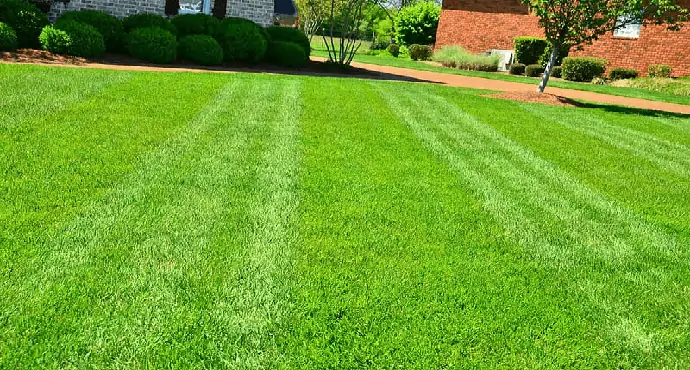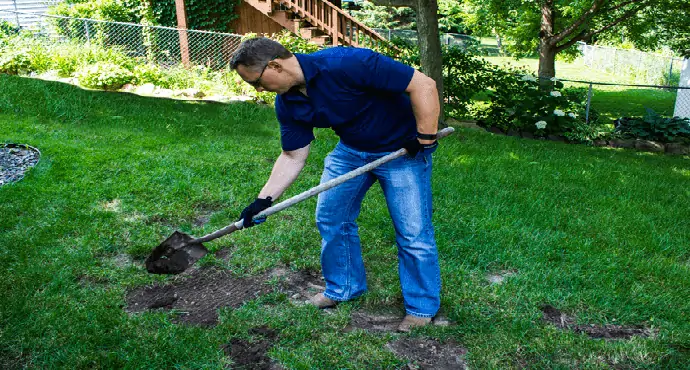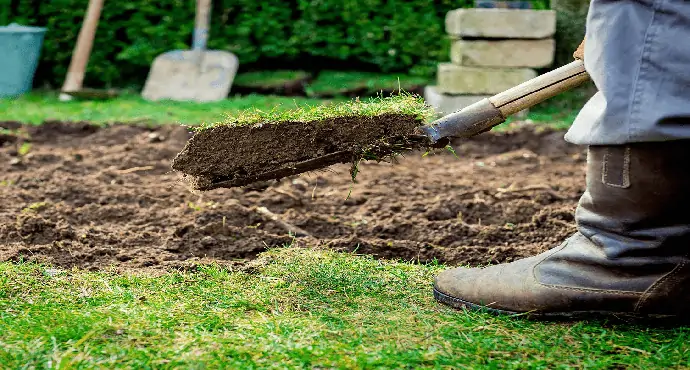How to Make Your Lawn Flat – Start with Great Idea in 2024
A perfectly leveled lawn is not only beautiful but safe for everyone at home. On the other hand, mowing a lawn with lumps and bumps can be very frustrating. That is partly why most homeowners invest in leveling their yards as a way of maintaining it regularly. When your lawn becomes bumpy, you can level it in a couple of steps.
No matter how leveled your lawn is, you should be aware that it can get bumpy over time. When it does, you do not have to panic since it is a problem that you can solve by yourself with the help of the lawn sweeper menards. We are here to give you tips on how to make your lawn flat.
What Causes Uneven Lawns?
Some of the factors that cause unevenness of your lawn include drainage issues, settling, and several natural and unnatural causes. When it rains, and waterlogging occurs on your lawn, it can cause damage to it too. It can also be caused by soil settlement, which includes things that happen beneath your yards, such as rocks, piping, and debris.
Such things can affect the lawn's composition and make it uneven. To solve such issues, you need the best lawn sweepers, among other pieces of equipment. When you make it flat, it can assist in encouraging better drainage and allows more absorption of water into the soil hence adding nutrients.
Preparing to Make the Lawn Flat

A home is appealing when the compound is flat. It is essential to level the lawn if it goes astray. Correction methods for a sloppy garden with dips vary with the degree of severity. This ranges from mild, moderate, and severe. Before you embark on leveling the lawn, you need to inspect and check it thoroughly.
This has to be done in advance to determine how much of the entire lawn will require leveling. This exercise can also help you identify existing drainage problems. By checking the cause of the unevenness first, you may avoid further damage to damaged water pipes or drainage problems, either of which may be the cause of the unevenness.
Different Approaches for Leveling Lawn
With the right tools and tips, you are more likely to achieve the best results with little effort. For instance, you will need the best lawn sweepers, among other devices. Here are some of the most common approaches to lawn leveling.
Mild Deformation
At some point, you realize that there are tiny swellings on the lawn. These swellings can be less than an inch. Correcting this is quite easy. Just step on the bumpy area, preferably early in the morning when the grass is dewy. The essence of doing this is to catch up with the moist grass. The moisture from dew makes the ground soft and easy to work on. Another way to level these bumps is by using a roller. If you are working on a dry lawn, you can sprinkle water as you roll on the swellings. Essential information to keep in mind is that overstepping and compacting too much makes the soil hard and difficult for water to slip through.
Topdressing

Topdressing is another method that can be used to heal mild deformation. It begins with preparing the lawn by mowing it to a very short carpet. Then use a rake to de-thatch. This is the most affordable and readily available tool for this job even though there are alternatives. It also makes leveling easy.
Mix sand and soil on a basin or wheelbarrow depending on the space you are working with. The mixture of sand and soil is good because it holds nutrients, unlike sand only, which eventually leaves the grass dry.
Add the mixture to affected areas. Ensure you add a thin layer because thick layers can choke the grass. Use the available Agri Fab lawn sweeper to level the mix repeatedly and water the lawn thoroughly. If the garden is not level, go over the above steps until you achieve the desired flatness.
Dips on the lawn

Small dips are also simple to clear. First and foremost, you have to put soil in the holes to cover them up. Please make sure the holes are full then press the ground to compact it. Add more while repeating the process until the vents are leveled. Then go ahead and plant seeds, water, and leave them to grow to level with the rest of the grass.
If the holes are tiny, give the lawn time to grow over them. You can distribute grass seed over the holes so that it can grow over the small holes to create a flat lawn surface. You should ensure you spray water on the seeds four times per day to help the seeds to germinate.
Slightly/Moderately Uneven Deformation
Have you ever walked at night or absent-minded and stepped in a hole when you least expected? How did it feel? That is how ugly small ditches on your lawn can be in a home. You can, however, make solutions for this issue by doing the following:
Cut the sod around the affected area. This should be about eight inches so that the sod does not break into pieces while being removed from its original home. Then pull the sod gentle to disintegrate the roots from the soil. You have to be extra careful not to lose the roots of the sod. Let the roots stay moist and keep the entire sod away from the sun.
Add enough soil on the hole left behind by the sod as you add water. It should be enough such that when you return the sod, it will level with the rest. Return the sod to its place and add enough water. Leave the sod to grow firm in its new position.
Severely Uneven Lawn

Gulley's and depressions in the home can be very depressing and dangerous. Correcting this type of unevenness can be tiresome but worth it. It entails regrading and planting a new lawn. You can use sacks filled with stones then level up with soil, after which you can plant new sods.
Also, filling deep holes can be achieved by adding soil while gently compacting the ground and spraying some water on it to settle it. You continue to fill up the holes while compacting it until it is leveled and perfectly compact. If you do not compact the soil while you fill it, it will settle later and still leave a sunken area. With a John Deere lawn sweeper, you will be able to create a lasting solution to your lawn.
Final Verdict
When doing repairs to your lawn, you should time it carefully. Spring is the best time to do this job since it will allow grass enough time to grow besides providing the moisture needed to help set the soil. Once you have leveled your lawn with the help of Lawn Sweeper Menards, you should also take preventive measures to avoid adding bumps or depressions.
One way to do so is by keeping the foot traffic off of your lawn when it is wet. With the information provided in this guide, you should now know how to make your lawn flat. Follow the steps carefully to help restore a long-lasting levelness to your lawn just like you want it.


